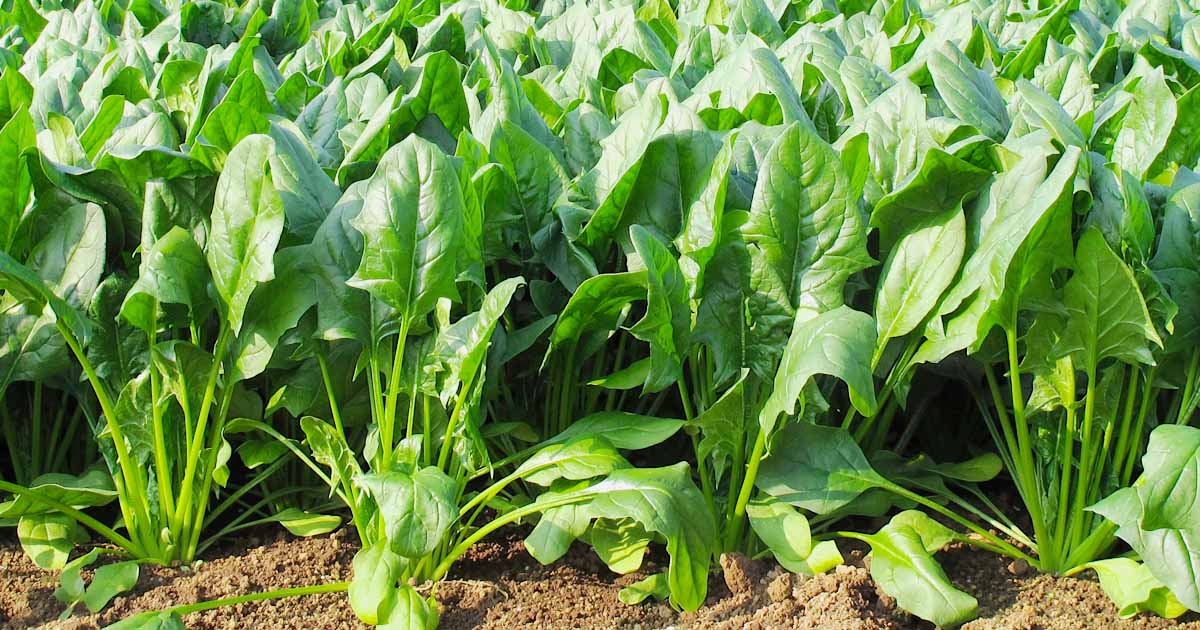
Cultivation of Palak (Spinach)
Palak (Spinacia oleracea), commonly known as spinach, is a popular leafy vegetable grown worldwide. It is known for its high nutritional value, particularly rich in vitamins A, C, and K, iron, folate, and fiber. Palak is consumed in salads, soups, and cooked dishes, making it an essential vegetable for many cuisines.
Origin and Area of Distribution
- Origin: Palak is believed to have originated in Persia (modern-day Iran) and was later introduced to India and other parts of the world.
- Global Distribution: It is widely grown across temperate, subtropical, and tropical regions. Major producers include China, India, the United States, and several European countries.
- In India: Palak is cultivated across the country, particularly in states like Uttar Pradesh, Punjab, Haryana, Madhya Pradesh, and Maharashtra.
Climate Requirements
- Temperature: Spinach grows best in cool weather, with an ideal temperature range of 10°C to 25°C. High temperatures may cause premature bolting (flowering).
- Light: Spinach requires full sunlight for healthy growth, though it can tolerate partial shade.
- Rainfall: It requires moderate rainfall or regular irrigation as the crop is sensitive to drought conditions.
Soil Requirements
- Soil Type: Palak prefers well-drained, fertile, and loamy soils with good organic matter content. It thrives in soils with a pH of 6.0–7.5.
- Soil Preparation: The soil should be tilled properly to ensure good aeration and drainage. Incorporating compost or well-decomposed organic matter enhances soil fertility.
Improved Varieties of Palak
- Palak Hybrid (e.g., Kalyan, Kanchan): Known for high yield and disease resistance.
- Desi Varieties (e.g., All Green, Indam-2000): These are commonly grown for local consumption, yielding tender, dark green leaves.
- Hybrid Varieties: They are popular for commercial production due to their improved disease resistance, longer shelf life, and better yields.
Time of Sowing:
- Season:
- Kharif (monsoon season): Sown in June to August, as spinach requires a cooler climate, which is common in the monsoon season.
- Rabi (winter season): Can also be grown from October to February, as the weather is cooler during this period.
- Sowing Method:
- Direct Seeding: Seeds are sown directly in the field.
- Nursery Transplanting: In some cases, seeds are sown in nurseries and seedlings are transplanted to the field after 4–5 weeks.
Seed Rate:
- Normal Seed Rate: 15–20 kg per hectare for direct sowing.
- Nursery Transplanting: 5–6 kg per hectare.
Planting Distance:
- Spacing: 20–25 cm between rows and 5–10 cm between plants for optimal growth.
- Row-to-row distance: 20–30 cm.
- Plant-to-plant distance: 5–10 cm.
Fertilizer Requirements:
- Nutrient Requirements: Spinach is a heavy feeder, and adequate nutrition is essential for good growth.
- N (Nitrogen): 60–80 kg/ha (for leafy growth).
- P (Phosphorus): 30–40 kg/ha (for root development).
- K (Potassium): 30–40 kg/ha (for overall plant health).
- Organic Manure: 5-10 tonnes of well-decomposed farmyard manure (FYM) or compost per hectare can be applied to enrich the soil.
- Application Method: Apply half of the nitrogen and full phosphorus and potassium before sowing. The remaining nitrogen can be top-dressed during the early stages of growth.
Irrigation:
- Spinach requires frequent irrigation to maintain soil moisture, especially during dry periods.
- Watering System: Drip irrigation or furrow irrigation is recommended for efficient water management.
- Irrigation Frequency: Regular irrigation is required during the growing season, particularly in dry periods. Over-irrigation should be avoided to prevent waterlogging.
Weed Management:
- Manual Weeding: Regular weeding is essential to prevent competition for nutrients and water.
- Mulching: Mulching with organic material can help suppress weed growth and retain moisture in the soil.
- Herbicides: In cases of heavy weed infestation, selective herbicides may be used, but care should be taken to avoid damage to the spinach crop.
Pest and Disease Management:
- Common Pests: Aphids, leaf miners, whiteflies, and caterpillars can infest spinach crops.
- Control Methods:
- Use organic or chemical pesticides as per the pest type.
- Encourage natural predators like ladybirds to control aphid populations.
- Common Diseases: Downy mildew, blight, and rust.
- Proper crop rotation, the use of resistant varieties, and regular fungicide treatments help manage these diseases.
Harvesting:
- Maturity: Palak can be harvested 30–40 days after sowing, depending on the variety and growing conditions.
- Harvesting Method: Leaves are picked when they are young, tender, and green. Cutting can be done by hand or using harvesting machines for large-scale cultivation.
- Continuous Harvesting: If desired, a continuous harvesting method can be employed, where mature leaves are harvested regularly, allowing new growth to develop.
Yield:
- Average Yield: 150–250 quintals per hectare, depending on the variety and cultivation practices.
- Hybrid Varieties: These tend to have higher yields compared to local varieties.
Physiological Disorders of Palak
- Bolting: The premature flowering of spinach, which leads to a bitter taste and reduced leaf yield. Cause: High temperatures or delayed harvesting. Management: Planting in the cooler seasons, using bolting-resistant varieties, and timely harvesting.
- Yellowing of Leaves: This can be caused by nitrogen deficiency, poor drainage, or root damage. Management: Apply sufficient nitrogen fertilizer, improve soil drainage, and ensure proper root care during transplanting.
- Tip Burn: Browning or wilting of the tips of the leaves. Cause: Calcium deficiency or water stress. Management: Regular irrigation and calcium supplementation can prevent this issue.
- Downy Mildew: A fungal disease that leads to yellow patches on leaves and affects plant health. Management: Use resistant varieties and apply fungicides.
- Leaf Curl: Caused by pests such as aphids or whiteflies, which transmit viruses. Management: Use pest control measures and select resistant varieties.

